Entries in Louis Kahn (5)
Louis Kahn- Four Freedoms Park
 Monday, March 5, 2012 at 12:58AM
Monday, March 5, 2012 at 12:58AM Looks like the park is going to open this year. Found a nice story that WNYC ran some time ago. Who knew his last built work would be constructed 38 years after he died.

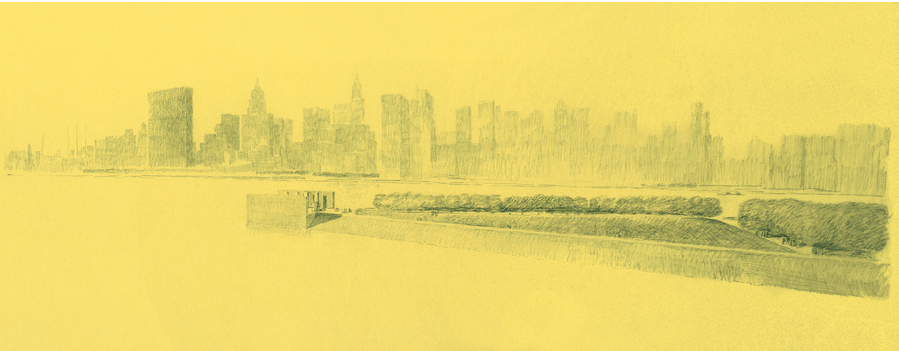
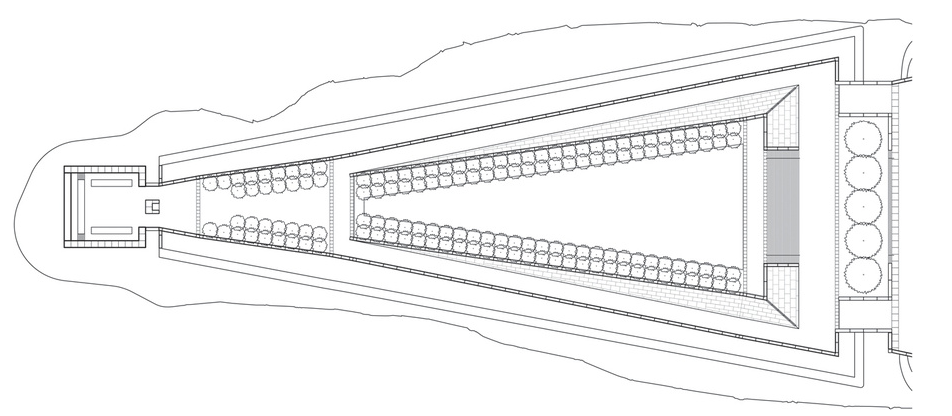
Four Freedoms Park (via www.fdrfourfreedomspark.org)
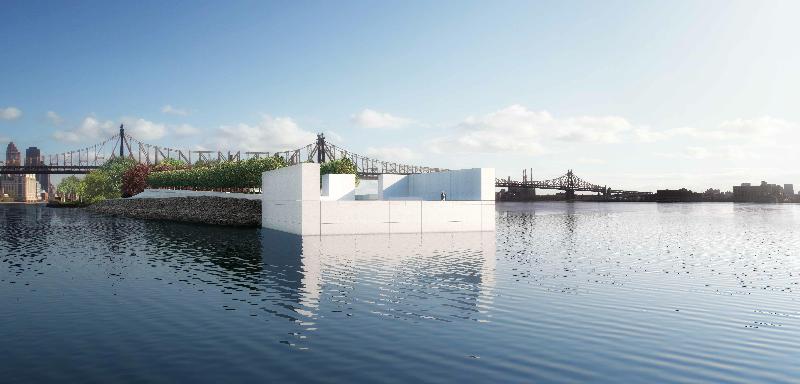
via roosevelt islander

via arch daily
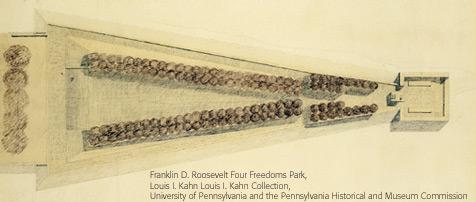
via structure hub
 Louis Kahn in
Louis Kahn in  Audio
Audio Imaginary Interview with Louis Kahn: Bomb Magazine
 Sunday, April 3, 2011 at 8:57PM
Sunday, April 3, 2011 at 8:57PM What a wonderful creative piece from a 1992 issue of Bomb Magazine.
EXCERPT Via Bomb Magazine
Reading the words of Louis Kahn 18 years after his death, we find the necessary antidote to the hollow rhetoric of the current situation. This “impossible interview” was compiled by selecting Kahn’s text first. Although the selection was personal and arbitrary, the choices were guided by a need to consider architecture as evidence of the success or failure of man’s institutions. In Kahn’s built work, we are forced to reconsider architecture in terms of a poetic reality that is integral to the material presence of his structures, and through his words, we can approach the source of this powerful magic.

Louis Kahn and his assistants working on Sher-e-Bangla Nagar, Dhaka, Bangladesh c. 1964. Photo: George Alikakos. All photos courtesy of the Museum of Modern Art, NYC.
READ THE REST here bombsite.com/issues/40/articles/1548
 Louis Kahn in
Louis Kahn in  Interview,
Interview,  Transcript
Transcript Louis Kahn Esherick House tour
 Friday, March 11, 2011 at 8:38PM
Friday, March 11, 2011 at 8:38PM Nice short video with commentary on the Esherick House. I believe the house is for sale (and has been for a while) for 2.4 million.
 Louis Kahn in
Louis Kahn in  Building Tour
Building Tour Carter Wiseman talks about Louis Kahn
 Saturday, July 3, 2010 at 12:48AM
Saturday, July 3, 2010 at 12:48AM
Via California Literary Review
By Paul Comstock
Carter Wiseman is an instructor at the Yale School of Architecture. He was the architecture critic for New York magazine from 1980 to 1996. His new book is Louis I. Kahn: Beyond Time and Style: A Life in Architecture.

- Let’s start with Louis Kahn’s childhood. What was his family life like, early education, etc.?
- As a child, Louis I. Kahn had pretty much everything going against him. He was born as Leiser-Itze Schmuilowsky in 1901 into a poor Jewish family in Russian-controlled Estonia. At age 3, he was badly burned on his face, and he carried the scars with him for the rest of his life. His father thought he would have been better-off had he died from the accident. When he came to the United States, in 1906, he lived in Philadelphia’s Jewish ghetto, and at times the family had barely enough to eat. Anti-Semitism may have played a role in his father’s decision to change the family name to the more German-sounding Kahn. Despite the problems, Kahn seems to have enjoyed his early years, especially the hurly-burly of city life. I think his experience playing on the streets of Philadelphia had a lot to do with his later designs, many of which were so welcoming to ordinary people. Despite his disadvantages, Kahn was picked out early by several public-school teachers who moved him along, and he eventually entered the University of Pennsylvania to study architecture. His most influential teacher was a French-educated master named Paul Cret, who gave Kahn a firm foundation in the Beaux-Arts principles of civic monuments and urban design.
- Is there a common thread to his work as an architect? What do you think he was trying to achieve?
- I think the most powerful common thread running through Kahn’s work was his humanity. He seems to have believed deeply in the idea that humankind is perfectible, and that architecture could play a role in that. You can see this in the inclusion of the study towers for scholars at the Salk Institute. The scientists were not much interested in the idea of individual studies; they were happy to spend their time in their labs. But Kahn and Jonas Salk, who saw the world much as Kahn did, felt that great thoughts would flow more freely from a monastic setting that allowed the thinkers to ponder the great questions of life in solitude, and with a great view of the ocean! You can also see Kahn’s humanistic impulse expressed in the way he insisted on treating his materials without any cosmetic improvements. For instance, he made sure the scratches produced in fabricating the metal handrails at Salk were not ground down. And he was quite content to accept imperfections in his concrete at the British Art Center if they revealed the way the material was poured. He even selected flawed bricks for the exterior of the Exeter Library to use as subtle touches of ornamentation.
- Surely his greatest contribution was to create architecture that was entirely of its day, but also had a timeless quality. Kahn was an astute student of architectural history, and in the course of his career he traveled in Europe, the Middle East, Africa, and the Indian Subcontinent. He seemed to be able to absorb fundamental lessons from every source, and then integrate them into forms that were uniquely his own. Some scholars have argued that Kahn got his inspiration for the Richards Medical Research Building at the University of Pennsylvania from the Italian hill-town of San Gimignano, or for the Kimbell Art Museum from the ruins of ancient Rome. Surely those sources contributed to the process, but it diminishes Kahn to suggest that he was basing his designs on them. It would be more accurate to say that he was extracting enduring messages from everything he saw and reinterpreting them for his own use. There is a simple test for this: I suspect most people with even a passing interest in modern architecture can date a building by Mies van der Rohe or Frank Lloyd Wright at a glance. You can’t do that with Kahn’s buildings. They look as if they have always been there, and as if they will always be there. That’s why I subtitled my book, “Beyond Time and Style.”
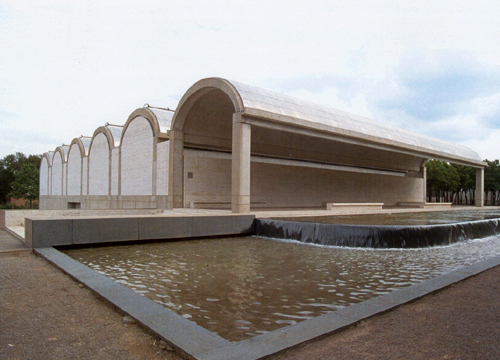
- (Kimbell Art Museum)
- From the pictures, much of Kahn’s work seems oppressively Brutalist, with its massive concrete forms. Is this ever a feeling one has when viewing or walking through his buildings?
- The sense of mass in Kahn’s buildings is deliberately deceptive. For example, the Exeter Library at first looks like a solid brick cube. But if you look at the corners, you will see that the walls do not meet, and you can see that they are actually thin screens. Something similar is true of the Kimbell Art Museum. It appears to be made of heavy, vaulted forms. But if you examine the joints where the roof meets the walls, you will see a remarkably delicate composition of recesses and glass strips that create a sense that the building is hovering on its supports. Even in Bangladesh, the monumental first impact of the Assembly building gives way to a series of layers that both shade the office windows and lighten the visual weight of the overall form.

- (Exeter Library)
- For those of us from Philadelphia, it’s fascinating to think what the city would be like if Kahn’s city planning ideas had been enacted. Would you tell us about those and how successful you believe they would have been?
- Most of Kahn’s city planning ideas were naïve, if not nutty. But there is a reason for this. When he graduated from architecture school, in 1924, the grandiose schemes developed by the Swiss-French architect Le Corbusier for tearing down most of central Paris and building enormous skyscrapers were the hot topic of discussion. Within a few years, the Great Depression, and then World War Two, put most architects, including Kahn, out of work. In response, many of them indulged in all sorts of Le Corbusier-based fantasies that could not be tested by building them. So we got Kahn’s drawings for gargantuan parking towers and high-rises that looked as if they had been made from Tinker Toys. They never could have been built, and they would have been awful if they had been. But the important thing to remember is that, unlike Le Corbusier, Kahn had a fundamental love for the messiness of urban life, and all of his plans were directed at preserving that. Indeed, he wanted to make sure that the cars were all parked at the edges of the city so that the pedestrian coming-and-going he so loved would be protected at the center.
- One of the most moving things in the documentary My Architect, by Kahn’s son Nathaniel, was the reverence that Bangladeshis had for the man who built their National Assembly Building. Louis Kahn is viewed as a highly evolved spiritual being. I’m wondering if you, as a Western architecture critic, ever see a spiritual dimension to the works you evaluate or the people who create them.
- Although Kahn was Jewish, he was never religiously observant. Nevertheless, he seemed to have a deep sense of the spiritual. You can sense it in the courtyard at Salk, which engages the sky and the ocean with an almost pagan power; it’s like a Stonehenge for science. And you can sense it in the Exeter Library, which reportedly has a cathedral-like impact on visitors, and the Assembly building in Dhaka, where the government chamber is no less a “sanctuary” than the central spaces at the First Unitarian Church in Rochester or the little synagogue Kahn did in Chappaqua, New York. David Rinehart, an architect who worked in Kahn’s office, told me that, “for Lou, every building was a temple. Salk was a temple for science. Dhaka was a temple for government. Exeter was a temple for learning.” I have never felt such a feeling of pantheistic reverence in the work of any other modern architect, except, perhaps, in Le Corbusier’s pilgrimage church at Ronchamp. Beyond that, you have to go back to the Greeks, Hagia Sophia, and the builders of Chartres to match it.
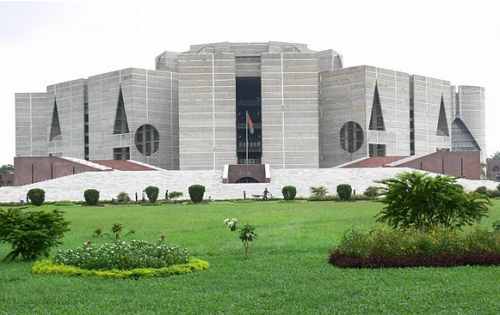
- (Dhaka Parliament)
- Louis Kahn had a complicated personal life. Would you tell us about that? Do you have any thought on the psychological reasons behind it?
- To say that Kahn had a “complicated personal life” is to understate the case. Although he was married to the same woman for 44 years, he was almost obsessively unfaithful to her. Former members of his staff have told me that Kahn would frequently take attractive women home from parties. Two of his lovers, Anne Tyng and Harriet Pattison, bore him children. (Harriet’s son, Nathaniel, made the wonderful film about Kahn, “My Architect.”) To be sure, he only seemed to stray with women who were both physically attractive and intensely intelligent, but the hurt to those around him was no less for that. No one seemed to fully understand his behavior. Sue Ann Kahn, Kahn’s daughter by his wife Esther, told me that her father was actually something of a prude; he would criticize her for wearing lipstick at what he thought was too young an age. Balkrishna Doshi, one of Kahn’s collaborators in India, told me he thought Kahn was simply sharing different parts of himself with women who could appreciate each one of them. But an architect who worked in the Kahn office for many years was less charitable. He said, “Lou was a homely little Jewish man. I think the women were his way of saying, ‘Maybe so, but I’m still OK.’”
- Of course, I’m biased, especially as an American. Perhaps I can stay out of trouble by listing ten of my favorites. These are in chronological order, not necessarily in order of importance.
- * The Robie House (1910), by Frank Lloyd Wright, remains a no-less-powerful building nearly a century after it created the architect’s signature look and helped launch the modern movement in Europe.
- * I love the Philadelphia Saving Fund Society (1932), by William Lescaze and George Howe, who was a close friend and partner of Kahn’s. PSFS was the building that introduced modernist skyscrapers to this country, but did it in a distinctly American way.
- * Wright’s Fallingwater (1937) embodies the architect’s genius for design with his love of the American landscape.
- * I would argue that New York’s Rockefeller Center (1940), whose main design architect was Raymond Hood, is the best urban complex of the century.
- * I wouldn’t want to live in the Farnsworth House (1951) by Mies van der Rohe, but I think it took an abstract view of domestic life to a level of near-perfection.
- * Le Corbusier’s church at Ronchamp (1955) skirts the melodramatic, but it is still the finest combination of sculptural virtuosity and religious sincerity I have seen.
- * Mies’s Seagram Building (1958) did the same thing for highrises that Farnsworth did for houses.
- * Although Kahn’s Salk Institute (1965) is only a fragment of the original plan, it is an icon of architectural mystery.
- * I think his library for the Phillips Exeter Academy (1972) is the purest distillation of the idea of what a library should be.
- * I. M. Pei’s renovation of the Louvre (1989) makes my list not only because of the elegant and historically evocative glass pyramid, but also because of the thoroughly intelligent reorganization of such a complex institution.
- * That’s ten, but I have to add Frank Gehry’s Guggenheim Museum in Bilbao (1998). Like Wright’s Guggenheim in New York, Bilbao is no friend to the art that is exhibited there, but as architecture and as a piece of urban sculpture that happened in the right place at the right time for both architect and architecture, it may become Gehry’s most enduring work. But Gehry is very much of his time, and Kahn is for the ages.
Why should we consider him one of the great architects of the 20th century?
You selected eight of Kahn’s buildings to focus on in this book. I’m going to put you on the spot and ask you to name the ten greatest architectural works of the 20th Century.
 Louis Kahn in
Louis Kahn in  Interview,
Interview,  Transcript
Transcript